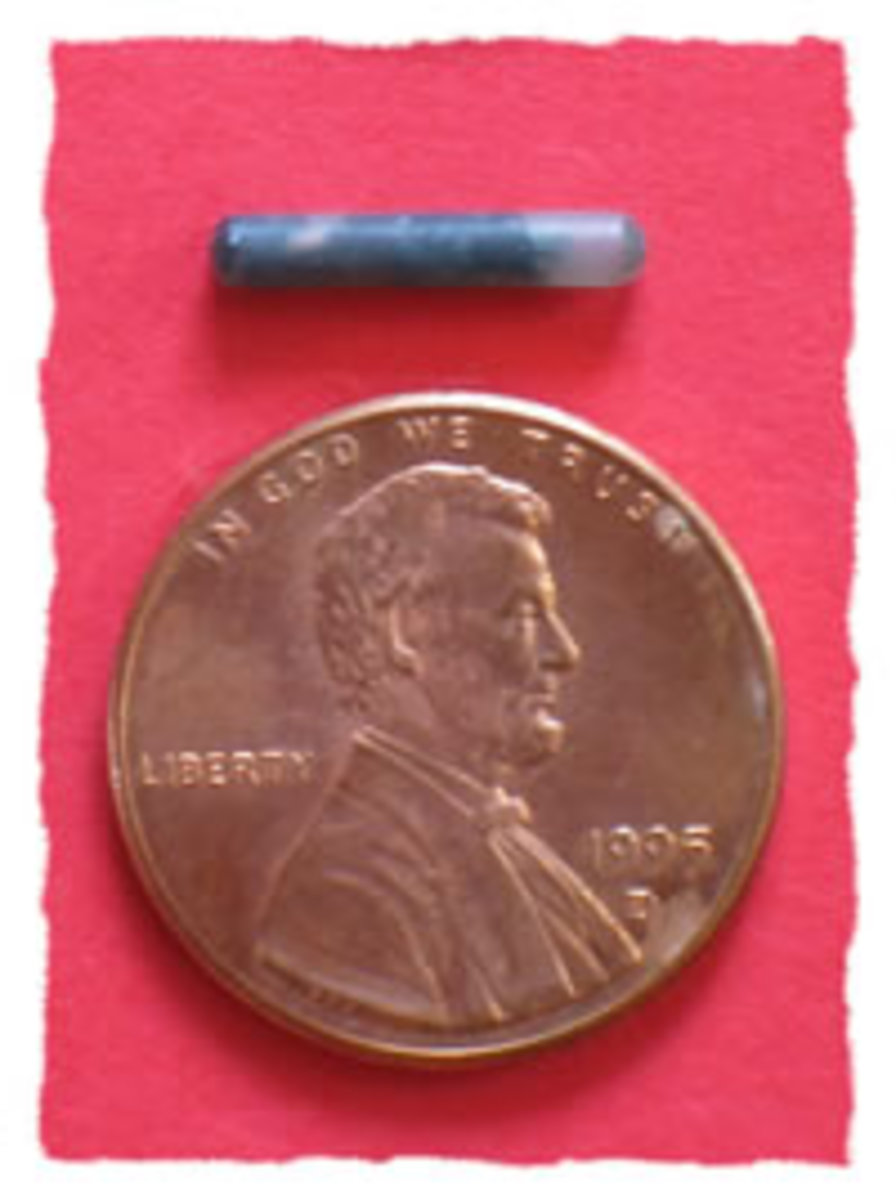Horse theft may be associated with the Old West, but unfortunately, modern-day horse theft is a reality. The most common reason for stealing horses is quick cash, and any horse–even those that aren’t expensive breeding stock or show horses–can hold value to a thief in a speedy sale.
Today, two methods of identifying horses can help in preventing their theft and recovering them if they are stolen. Microchips implanted under the skin have now been around for several years, while branding has been used for hundreds of years, and both serve a purpose for today’s horse owner.
Microchips
The microchip is smaller than a grain of rice and can be inserted with a hypodermic needle

Microchip technology has improved through the past two decades to offer chips the size of an uncooked grain of rice that are easy to implant and safe for the horse throughout his life. The tiny computer chips each contain a unique identification number that can be read by a scanner through radio frequency signals; those numbers are registered to the animal’s owner at the time of microchipping.
Injecting a microchip is simple enough that any horse owner comfortable with giving inter-muscular antibiotic or vaccination injections should have no trouble with the procedure. However, rules vary from state to state, with some states working toward making microchip injection legal by veterinarians only. The chip is small enough to fit into a hypodermic needle, and is injected on the left side of the horse’s neck, halfway between the poll and withers, into the ligament about an inch below the base of the mane.
The cost of an individual chip ranges from $15 to $25. Most veterinarians charge $20 to $30 to implant a microchip. No sedation is required.
One of the U.S. manufacturers of microchips is AVID (American Veterinary Identification Devices). It guarantees its chips for the life of the animal. The company also makes scanners that read either only AVID chips or that read chips by several other makers.
In the attempt to create a chip that a horse’s body wouldn’t react to or reject as a foreign object, the industry stumbled into the problem of migration. Inert materials that were biocompatible to the horse’s body were so successful that early microchips could actually migrate through his tissue.
That problem led to the advent of a patented anti-migration cap, Bio-Bond by Destron-Fearing (now Digital Angel Corporation), a company that also manufactures microchips and scanners. Dr. Kevin Owen, retired veterinarian and owner of microchip product distributor Electronic ID, Inc., says, “Scientific studies show that scar tissue starts to adhere to the Bio-Bond anchor within 18 hours, anchoring the chip in place.”
According to AVID, when properly implanted, a small layer of connective tissue forms around the microchip, preventing it from moving. The biggest improvement to the microchip procedure was actually a simple one. The injection site was changed from under the skin on the side of the neck to the nuchal ligament under the mane. This standardized site stops migration by the nature of the density of the tissue.
Working out a System
The Texas and Southwestern Cattle Raisers Association’s new national horse identification program (HIP) plans to make microchip kits available to horse owners, but is waiting for the microchip industry to sort out compatibility issues. “The situation is a little like the videotape industry in the beginning, before the VHS format became dominant over Beta,” says Todd McCartney, HIP director.
McCartney sees HIP as the ideal central database to store microchip numbers. “We can provide a home for that data as a neutral law enforcement agency, and chips are excellent for providing positive identification.”
The HIP provides members with alert signs indicating that horses are electronically protected. “Electronically protected means only that a horse is enrolled in our computer system at this point, but a thief may think he’s being tracked,” McCartney says. The tracking capacity isn’t currently an option because the chips would need a power source. Microchip implants merely respond and give a number to a reader.
Microchip manufacturers, such as AVID, also provide signs warning that horses on the premises are identified by microchips. AVID Equine has also distributed scanners that are able to read any chip commonly used in U.S. horses, regardless of manufacturer, to all USDA slaughter facilities.
Brand Eye-dentification
“Microchips are great for positive identification if a horse is found,” says Debi Metcalfe, founder of Stolen Horse International, Inc. “However, they’re invisible to the eye and require a scanning device, usually only in the possession of veterinarians, animal control officers and slaughter plant officials. A freeze brand, preferably on your horse’s shoulder or rump, can not only help track and identify a horse, but actually act as a deterrent, whereas the invisible microchip won’t.”
Some states require brand registration to avoid duplicating someone else’s. Brands that are easy for the general public to identify, such as universal symbols or letters, can greatly aid in the search for a stolen horse.
“Non-horse people may have trouble recognizing a bay horse with a snip and a sock,” explains Metcalfe, “but they can easily identify what they know of as a brown horse with a white heart on his shoulder. Freeze branding is not only one of the best deterrents, but administered by a professional for $35 to $60, one of the least expensive.”






